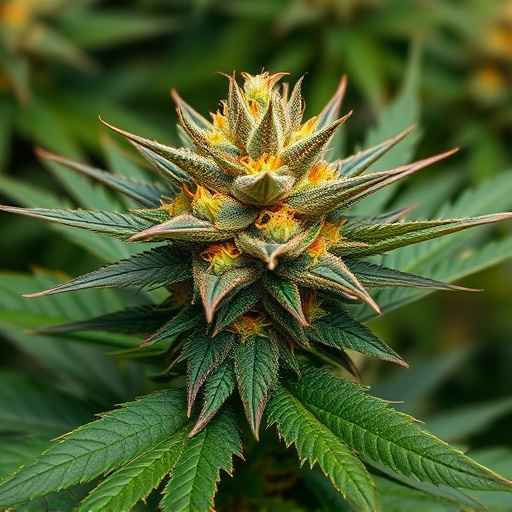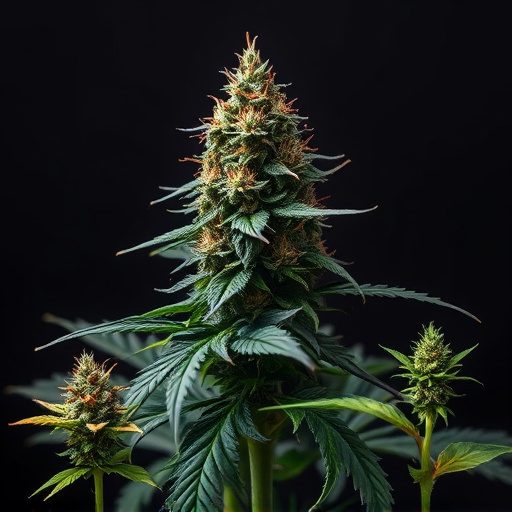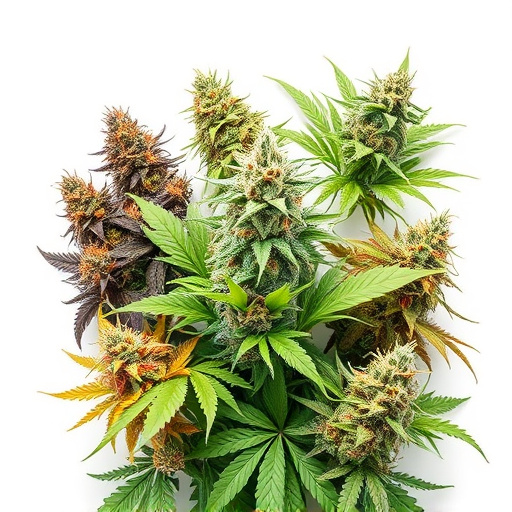Indica cannabis strains, characterized by higher THC and lower CBD levels, offer unique stress-relieving effects due to their cannabinoid and terpene profiles. These compounds, like myrcene, contribute to a spectrum of experiences from energizing to sedative. Indica's interaction with the body's endocannabinoid system provides potential therapeutic benefits for conditions such as stress, anxiety, insomnia, chronic pain, and appetite stimulation, making it a popular choice in modern medicine, emphasizing the importance of exploring different cannabis strains.
“Discover the captivating world of Indica cannabis flower and its profound effects on the human body. This article guides you through the intricate details of understanding Indica strains, their distinct properties, and how they interact with our physiology. From relaxation and pain relief to potential medical applications, we explore the benefits that make Indica a popular choice among different cannabis users. Uncover the science behind this game-changing strain and its impact on well-being.”
- Understanding Indica Cannabis Strains and Their Unique Properties
- The Physiological Effects of Indica on the Body
- Exploring the Potential Benefits and Medical Applications
Understanding Indica Cannabis Strains and Their Unique Properties

Indica cannabis strains, one of the two main types (along with Sativa), are renowned for their distinct properties and effects on the body. Known for promoting relaxation and a sense of calm, Indicas are often sought after by individuals looking to unwind and alleviate stress. This is largely due to their unique chemical composition, particularly the higher levels of cannabinoids like THC (tetrahydrocannabinol) and lower concentrations of CBD (cannabidiol) compared to Sativas.
The effects of Indica strains vary from one another as different breeds possess varied cannabinoid and terpene profiles. Some Indicas are more invigorating and energizing, while others induce heavy sedative-like effects. Terpenes—the aromatic compounds in cannabis—also play a role in the overall experience. For instance, myrcene, known for its earthy scent, is commonly found in many Indica strains and is linked to feelings of relaxation and sleepiness. Understanding these nuances among different cannabis strains can help users choose the right variety to suit their desired effects and needs.
The Physiological Effects of Indica on the Body
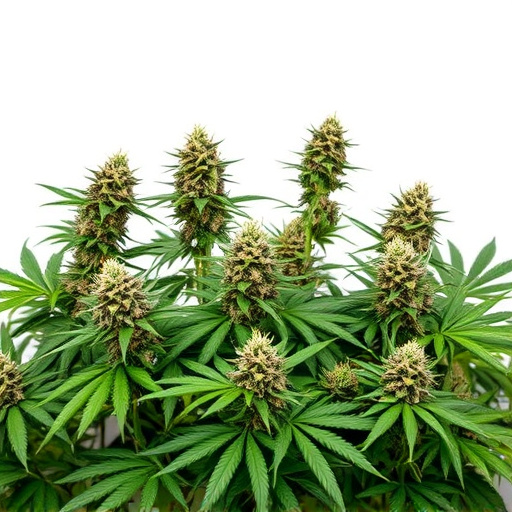
Indica cannabis flowers are renowned for their distinct physiological effects on the human body, setting them apart from other strains like Sativa. These effects are primarily attributed to the unique combination of cannabinoids and terpenes found in Indica plants. One of the key compounds, tetrahydrocannabinol (THC), is responsible for many of the strain’s mind-altering properties, inducing feelings of relaxation and altering perception. However, Indica also contains higher levels of cannabidiol (CBD), a non-intoxicating compound known for its potential therapeutic benefits, including reducing anxiety and inflammation.
The physiological impact of Indica extends beyond the central nervous system. Studies suggest that it can interact with the body’s endocannabinoid system, which plays a crucial role in regulating various physiological processes, including appetite, pain sensation, and mood. This interaction may explain why Indica is often sought after for its soothing properties, helping to alleviate stress, improve sleep quality, and even manage chronic pain conditions. Different cannabis strains like Indica offer unique profiles of cannabinoids and terpenes, contributing to diverse experiences and potential therapeutic applications.
Exploring the Potential Benefits and Medical Applications
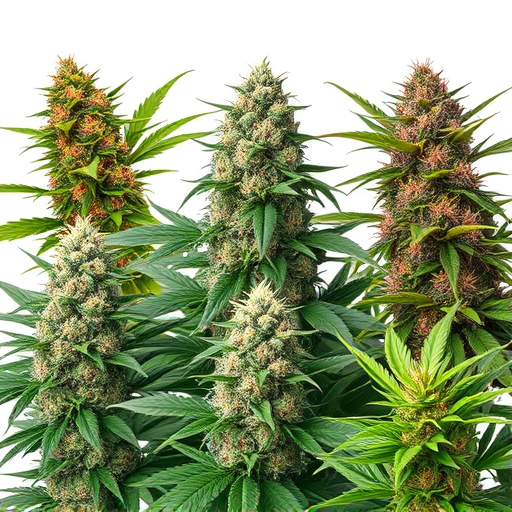
The Indica cannabis flower, known for its calming and relaxing effects, offers a range of potential benefits that have caught the attention of medical professionals and patients alike. One of its key attributes is the ability to alleviate stress, anxiety, and insomnia—common conditions that significantly impact daily life. Many different cannabis strains, including Indica varieties, contain compounds like cannabinoids and terpenes, which interact with the body’s endocannabinoid system, potentially modulating mood, memory, and pain perception.
Additionally, Indica is often sought after for its perceived positive effects on physical health. Studies suggest it may help manage chronic pain, making it a potential treatment option for individuals dealing with conditions like arthritis or fibromyalgia. Some Indica strains are also renowned for their ability to stimulate appetite, which can be beneficial for patients undergoing cancer treatments or experiencing weight loss due to medical conditions. This multifaceted approach to wellness further highlights the value and promise of exploring different cannabis strains in modern medicine.
Indica cannabis flowers offer a unique set of properties that distinctively affect the body, compared to other cannabis strains. Understanding these effects is crucial for both recreational users and those exploring medical applications. The physiological benefits of Indica, including its relaxing and pain-relieving properties, make it a popular choice for managing stress, anxiety, and chronic pain. As research continues to evolve, delving into the diverse world of different cannabis strains, such as Indica, empowers us to unlock their full potential for enhancing well-being and improving quality of life.

